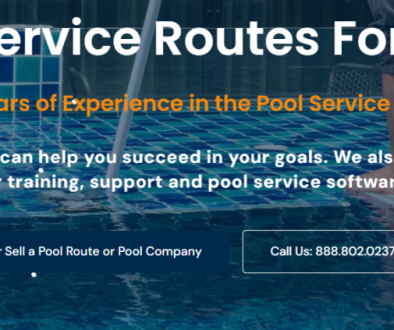Implementing Performance-Based Incentives for Staff
Implementing Performance-Based Incentives for Staff: Boosting Productivity and Engagement
Implementing Performance-Based Incentives for Staff
Performance-based incentives can transform the workplace, fostering an environment where employees are motivated to excel and contribute to the company’s success. This blog post delves into the strategies and benefits of implementing such systems, exploring how these incentives can enhance productivity, engagement, and overall job satisfaction among staff.
Introduction
In today’s competitive business landscape, organizations are continuously seeking ways to boost employee performance and motivation. One effective approach is implementing performance-based incentives for staff. These incentives are designed to reward employees for achieving specific goals or exceeding performance expectations. By aligning individual performance with organizational objectives, companies can cultivate a high-performance culture that drives results. In this article, we will explore the types of performance-based incentives, their benefits, potential challenges, and best practices for successful implementation.
Understanding Performance-Based Incentives
Performance-based incentives can take various forms, including monetary rewards, bonuses, recognition programs, and career advancement opportunities. The primary goal of these incentives is to motivate employees to achieve their best work.
- Types of Incentives: Common performance-based incentives include cash bonuses for meeting sales targets, stock options for achieving long-term goals, and non-monetary rewards like recognition awards or extra vacation days. According to a report by the Society for Human Resource Management (SHRM), 75% of employees prefer non-monetary recognition, indicating that incentives do not always have to be financial to be effective.
- Examples in Practice: For instance, a sales team might receive bonuses for exceeding quarterly sales goals, while a customer service department could be rewarded with an employee of the month program that includes a prize for exemplary service.
The Benefits of Performance-Based Incentives
Implementing performance-based incentives offers numerous advantages for both employees and organizations.
- Enhanced Motivation: When employees understand that their efforts directly impact their rewards, they are more likely to stay engaged and perform at higher levels. A study by Gallup found that employees who are engaged are 17% more productive.
- Alignment of Goals: Performance incentives align individual goals with organizational objectives. This ensures that everyone is moving in the same direction towards common goals, enhancing teamwork and collaboration.
- Attracting and Retaining Talent: Companies that offer performance-based incentives often attract top talent and retain skilled employees. According to LinkedIn data, organizations that invest in employee development and recognition can reduce turnover rates by up to 40%.
Challenges in Implementing Performance-Based Incentives
While the benefits are significant, there are challenges associated with implementing performance-based incentives.
- Setting Fair Metrics: One of the primary challenges is establishing clear and fair performance metrics. If employees feel that the evaluation criteria are biased or unattainable, it can lead to dissatisfaction and disengagement.
- Overemphasis on Quantity Over Quality: Organizations must be cautious that performance-based incentives do not encourage employees to focus solely on quantity at the expense of quality. For example, a sales team might prioritize closing deals over providing excellent customer service, which could negatively impact the company’s reputation.
- Potential for Unhealthy Competition: While a little competition can be motivating, excessive competition can create a toxic work environment. It is crucial to foster a culture of collaboration alongside competition.
Best Practices for Implementing Performance-Based Incentives
To maximize the effectiveness of performance-based incentives, organizations should follow best practices.
- Clear Communication: Clearly communicate the details of the incentive program, including how performance will be measured, what behaviors are encouraged, and the rewards associated with various levels of achievement. Transparency is key to ensuring that employees understand and buy into the program.
- Regular Feedback: Provide ongoing feedback to employees about their performance. This helps them stay on track and make adjustments as needed. Regular check-ins can also prevent misunderstandings and misalignments regarding performance expectations.
- Diverse Incentive Options: Offer a variety of incentives to cater to different employee preferences. Some may be motivated by financial rewards, while others might value recognition or additional time off. Understanding your workforce’s preferences can significantly enhance the program’s effectiveness.
Integrating Performance-Based Incentives with Employee Development
Performance-based incentives can also be integrated with employee development initiatives to reinforce continuous improvement.
- Training and Development Opportunities: Companies can offer training sessions or development workshops as part of their incentive programs. For instance, employees who meet specific performance targets could earn access to exclusive training sessions or professional development courses.
- Career Advancement Paths: Aligning performance incentives with career advancement opportunities can also motivate employees. If high performers are recognized and rewarded with promotions or leadership training, it signals that the organization values their contributions and is committed to their growth.
Measuring the Success of Performance-Based Incentives
To ensure that performance-based incentives are effective, organizations must establish methods for measuring success.
- Key Performance Indicators (KPIs): Define clear KPIs that align with the goals of the incentive program. Regularly review these metrics to assess whether the program is achieving its intended outcomes.
- Employee Surveys: Conduct employee engagement surveys to gather feedback on the incentive program. Understanding employees’ perceptions of the program can provide valuable insights for refinements and improvements.
- Regular Program Evaluations: Schedule regular evaluations of the incentive program to analyze its effectiveness in driving performance and engagement. This allows organizations to make necessary adjustments and ensure continued alignment with business objectives.
Creating a Culture of Recognition
Beyond monetary rewards, fostering a culture of recognition can significantly enhance employee morale and motivation.
- Peer Recognition Programs: Encourage peer-to-peer recognition where employees can acknowledge each other’s efforts and contributions. This not only boosts morale but also strengthens team dynamics.
- Celebrate Achievements: Regularly celebrate both individual and team achievements. Whether through team meetings, newsletters, or company-wide announcements, recognizing accomplishments reinforces the value of hard work and dedication.
- Leadership Recognition: Leaders should actively participate in recognizing team members’ efforts. A simple thank you from management can go a long way in making employees feel valued.
Case Studies of Successful Implementation
Several organizations have successfully implemented performance-based incentives and reaped the rewards.
- Salesforce: Recognized as a leader in customer relationship management (CRM), Salesforce integrates performance-based incentives with its employee culture. The company has a structured program that provides bonuses tied to sales performance, which has resulted in a significant boost in productivity and employee satisfaction.
- Google: Known for its innovative work culture, Google has employed performance-based incentives in conjunction with its development programs. Employees are rewarded for achieving performance metrics, but they also receive opportunities for professional development, making the incentives holistic and effective.
Conclusion
In conclusion, implementing performance-based incentives for staff can yield substantial benefits, including increased motivation, improved engagement, and enhanced productivity. While there are challenges in setting up an effective program, following best practices—such as clear communication, regular feedback, and diverse incentive options—can help organizations overcome these obstacles. By fostering a culture of recognition and integrating incentives with employee development, companies can create an environment where everyone thrives. As the workplace continues to evolve, organizations must adapt and innovate to keep employees motivated and focused on achieving collective goals. Start your journey towards a more engaged workforce today—contact us to explore how you can implement performance-based incentives effectively.



